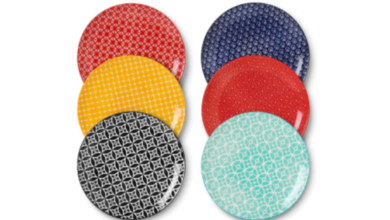What is Multiview 3D projection, and how does it work?

Introduction
“What’s next?” is a frequent inquiry when it comes to the newest advancements in Virtual Reality and immersive display technologies. We’ve seen many breakthroughs from a variety of motion-related gadgets to provide you with the feeling of actually walking inside a virtual realm, as well as devices worn that provide haptic feedback and the capacity to touch fake content that simply does not exist.
Beyond that, HMDs are quickly evolving, with larger fields of vision, greater resolution, mixed reality cameras, wireless video transmission capabilities, and more.
Many new technologies fall short of user expectations, and the majority are targeted at the lucrative entertainment industry rather than addressing critical professional-grade requirements in business and industry.
3D projection technology, on the other hand, is not yet a thing of the past in professional-grade VR displays. Multiview 3D stereo capable projection technology, in particular, is making its way into this market.
What is Multiview 3D projection?
Traditionally, 3D technology has been hampered by a significant immersive barrier: each user was seeing the same image, regardless of where they were situated while wearing 3D glasses, much like those used in modern digital cinemas.
Before a Powerwall or conventional VR theatre setup of such displays each with the capacity to sense depth in computer-generated material, enormous audiences were accommodated. However, they would continuously view the same picture from a single viewpoint.
This is a wonderful method for creating motion without disrupting the audience’s view of the screen. It’ll also work for movie theatres, where people aren’t moving about the picture.
However, there is a requirement for a more adaptable solution in commercial, industrial, and research applications where clients need to comprehend the material better by walking around it and getting viewpoints from various angles.
With the newest advances in technology, it is now feasible to have a Multi-View 3D projection: a single projector that can display several viewers at once while maintaining each viewer’s perspective on the image consistent with their changing location.
Users can truly collaborate and interact with one another in a shared, collaborative manner. Multi-View 3D is most often utilized with CAVE or high-end Powerwall displays. To compute where the glasses worn by an individual are looking, these displays employ spatial tracking technology.
In this manner, for each viewer, the correct confirmed view can be presented in real-time. Such displays are extremely beneficial from a visual standpoint since they allow users to crouch, look around and underthings, comprehend them, and so on.
A VR solution now part of reality
Multiview 3D stereo is now a reality, and it’s available on production-based projection equipment. What this implies is that the projectors can accept video inputs from several Image Generator sources and execute them fast enough to provide separate pictures to multiple eyes within the normal visual frame, thanks to their onboard electronics’ capability of processing video signals.
This invention allows for two individuals, or more, to be side by side and wearing tracked glasses while yet having their unique computed views displayed on the lenses.
VR collaboration software
The participants may interact and explore the same virtual content in front of them through wireless interactive devices, yet each individual has his or her own viewpoint no matter where they are looking.
This is true even if the users are moving through a distant region of the content, far from the other user or bent down looking up at an item, whilst the other user is viewing from above. Collaborative use is enhanced by this form of immersion since users may be completely aware of their immediate surroundings and can see each other’s facial emotions and body language using 3D glasses.
Because we are able to use our voice, emotions and body language effectively during a virtual meeting, the interaction is more natural and the decision-making process is quicker. The introduction of brighter laser-based solid-state projectors also ensures that regardless of any brightness losses shared among individual attendees’ eyes, the experience may still be enjoyed. Furthermore, this innovation allows for the development of new applications and uses for projected display screens.
Two completely different and distinct experiences may presently be delivered to the same display surface: one individual could be engrossed in architecture while another is engaged in a medical application. This unique technology enables for live simultaneous usage of a single display by two viewers. A flythrough or experience might be shown to half the spectators, while the other half receives completely different information, for entertainment or presentation purposes to a wider unmonitored audience.
When mixed with headphones, this may allow for more specific languages and experiences tailored to particular audience types or, alternatively, a version without age-related material while still entertaining the adults surrounding them
ST Engineering Antycip is eager to bring these projection technologies to VR customers, and we’re excited to see how they can be used to adapt your display needs and applications in the future.





